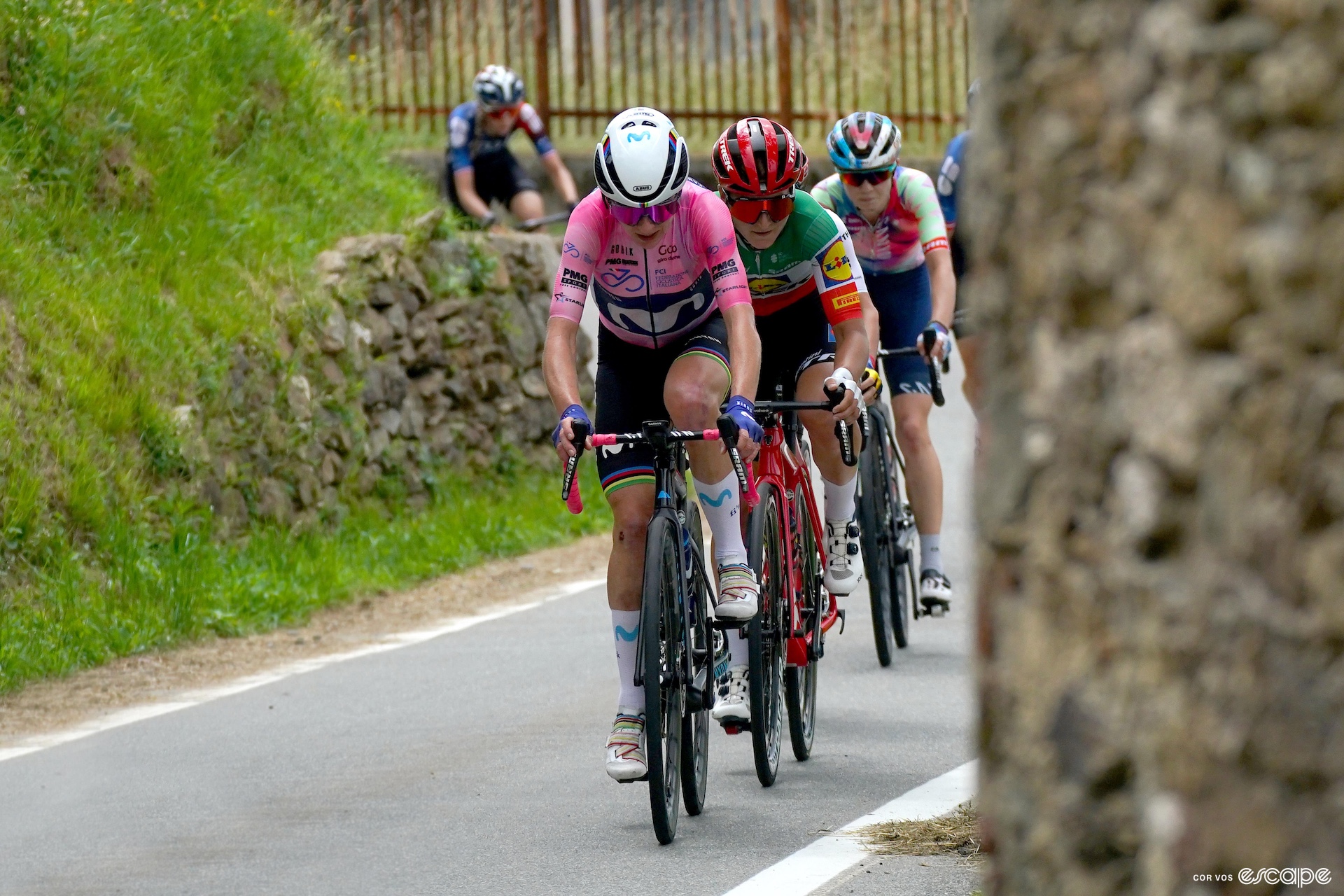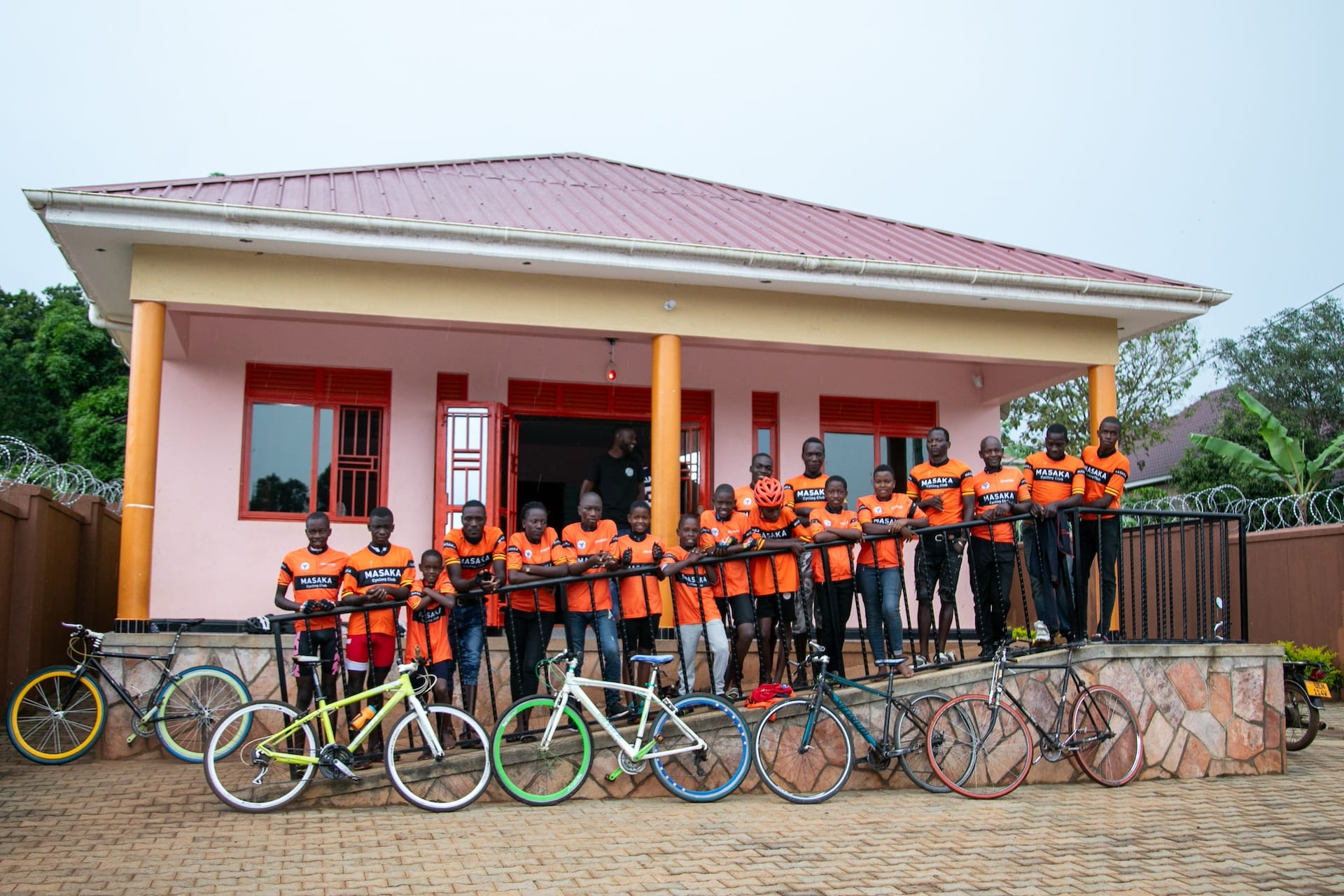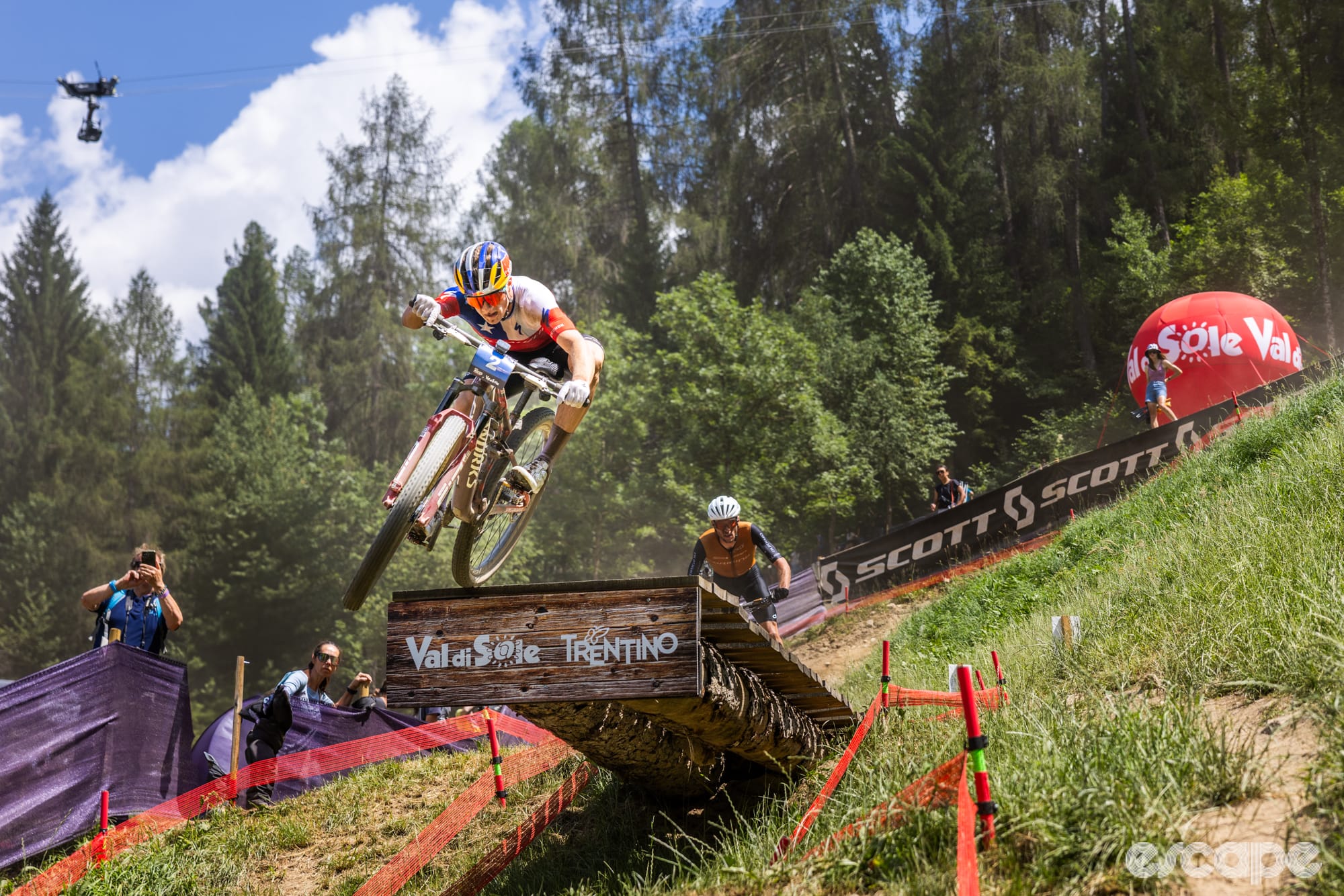On Sunday the second women's "Grand Tour" of the year is set to begin in Brescia, Italy. The eight-stage, newly renamed Giro d'Italia Women will cover 875.3 km with 13,551 meters of elevation gain, 1,466 meters more than the Vuelta Femenina that took place in April and 323 less than the upcoming Tour de France Femmes avec Zwift.
The race offers very few chances for sprinters, one individual time trial that will be hotly contested as it is the last WorldTour time trial before the Paris Olympics, and many, many kilometers of climbing including two laps (kind of) of the famous Blockhaus ascent. Overall, the race is going to be a challenging one, and the contenders for the general classification will be the best climbers of the bunch. Without Annemiek van Vleuten, the Queen of the Giro who retired at the end of last season, the race is more wide open than it's been in years.
A breakdown of all the riders to watch for the GC, stage wins, and more is coming on Escape Collective closer to the race, for now let's dive into each stage of this year's Giro, the first organized by RCS, the same organizers of the men's Giro d'Italia.
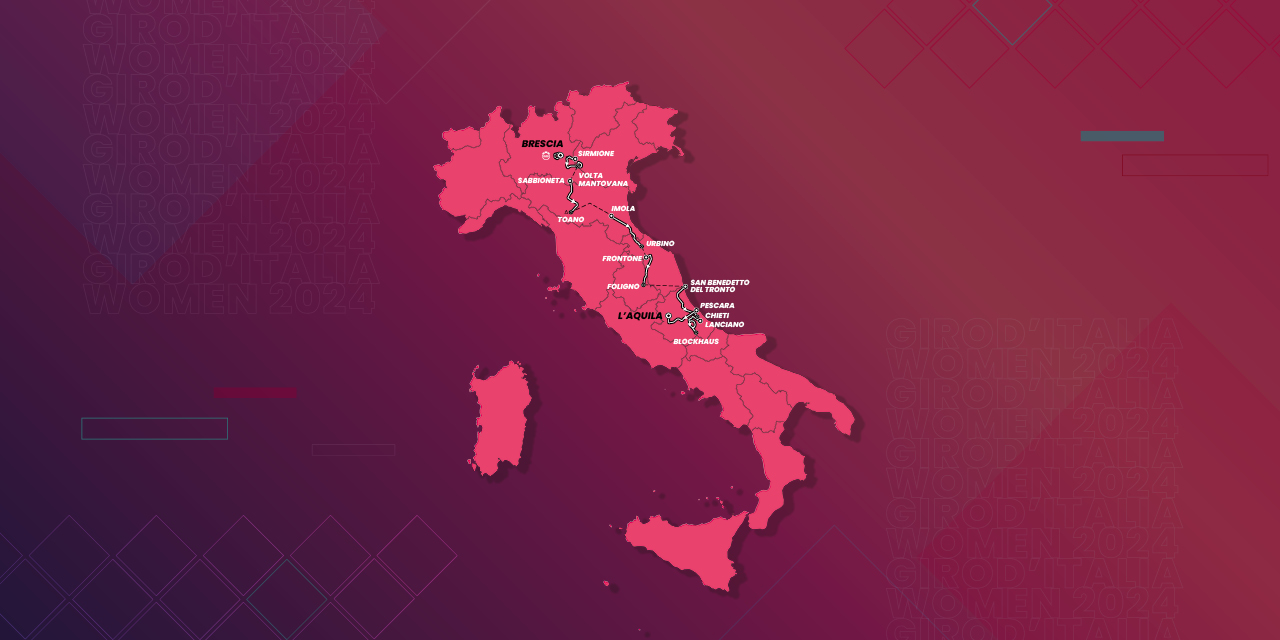
Play our Giro fantasy game!
You'll need to know what the stages look like in order to play Escape Collective's fantasy game. It's not like your other fantasy games, instead of picking a team before the race starts and following their progress throughout the week, the EC game is day-by-day, allowing you to make glorious comebacks and throw about bragging rights for picking outsiders who go on to take a stage.
If you're not sure how to play, here's a handy-dandy guide for you.
You'll find the game here, or you can download the Escape Collective app from the App Store (iOS) or the Play Store (Android).
Stage 1: Brescia to Brescia (15.7km)
Date: Sunday, July 7
Stage type: ITT
Summary: A TT specialist's dream start to the Giro.
Hopefully, the opening individual time trial will be a dry one this year. No one needs a repeat of last year's attempt at ice skating on bikes.
This year's ITT is significantly longer than the 4.4 km not-technically-a-prologue the women raced to open the Giro last year. At 15.7 km it's not a warm-up but a legit first test for anyone hoping to participate in the general classification competition.
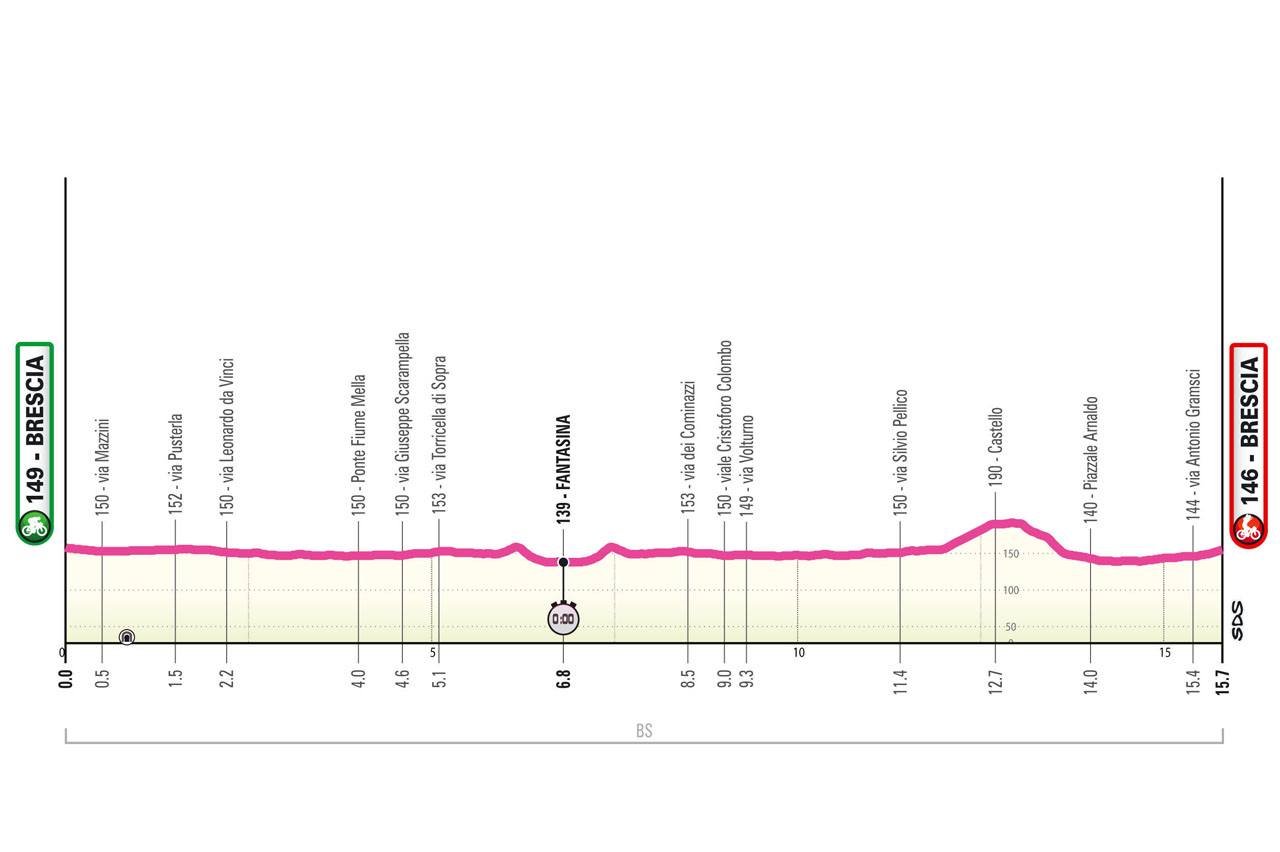
More than that, it's not a flat one. The first 12 km are the "easiest," with a few tiny bumps and dips, but nothing major. But with 3.8 km to go in the stage the women will race over an 800-meter-long ascent that reaches 7.3%. It's no Tour de Suisse, but it will break up the rhythm of the course and especially test a few of the time trial specialists.
Once they finish the climb the women will descend to the line and finish on a slight uphill drag.
There are only three technical sections on the course. After rolling off the start ramp the riders will take two immediate right turns followed by a sharp left. Before and after the turnaround point, they will navigate a roundabout. The most technical section is on the descent. With 2 km to go there are four hairpin turns that will be a challenge, especially at speed. Oh, and it's cobbled.
Marlen Reusser said earlier in the year that the Giro overall was a goal for her, and looking at this opening stage she may even pull on the pink jersey after one (long-ish) effort. The former Swiss champion hasn't had an easy run at the 2024 season and missed her home Tour due to illness, but with this first stage, if her form is coming back around, at least wearing the pink jersey is well within reach.
Stage 2: Sirmione to Volta Mantovana (110 km)
Date: Monday, July 8
Stage type: Slightly hilly
Summary: Ample opportunity for last-minute moves.
The second stage includes two laps of a circuit with a category 4 ascent at the very end of the stage, and one uncategorized climb at the very beginning, but other than that it's pretty flat from 29 km into the stage to 37 km to go.
At only 110 km, the stage is not a long one. The first climb is 8 km into the stage and lasts about 5.5 km. It's not straight uphill but rather a climb that pitches and rolls, hence why it's not categorized. The climb won't make any massive dents in the peloton, but since it's so early in the stage, it offers a great opportunity for some smaller teams to attack. It also means that riders might want to warm up before the stage.
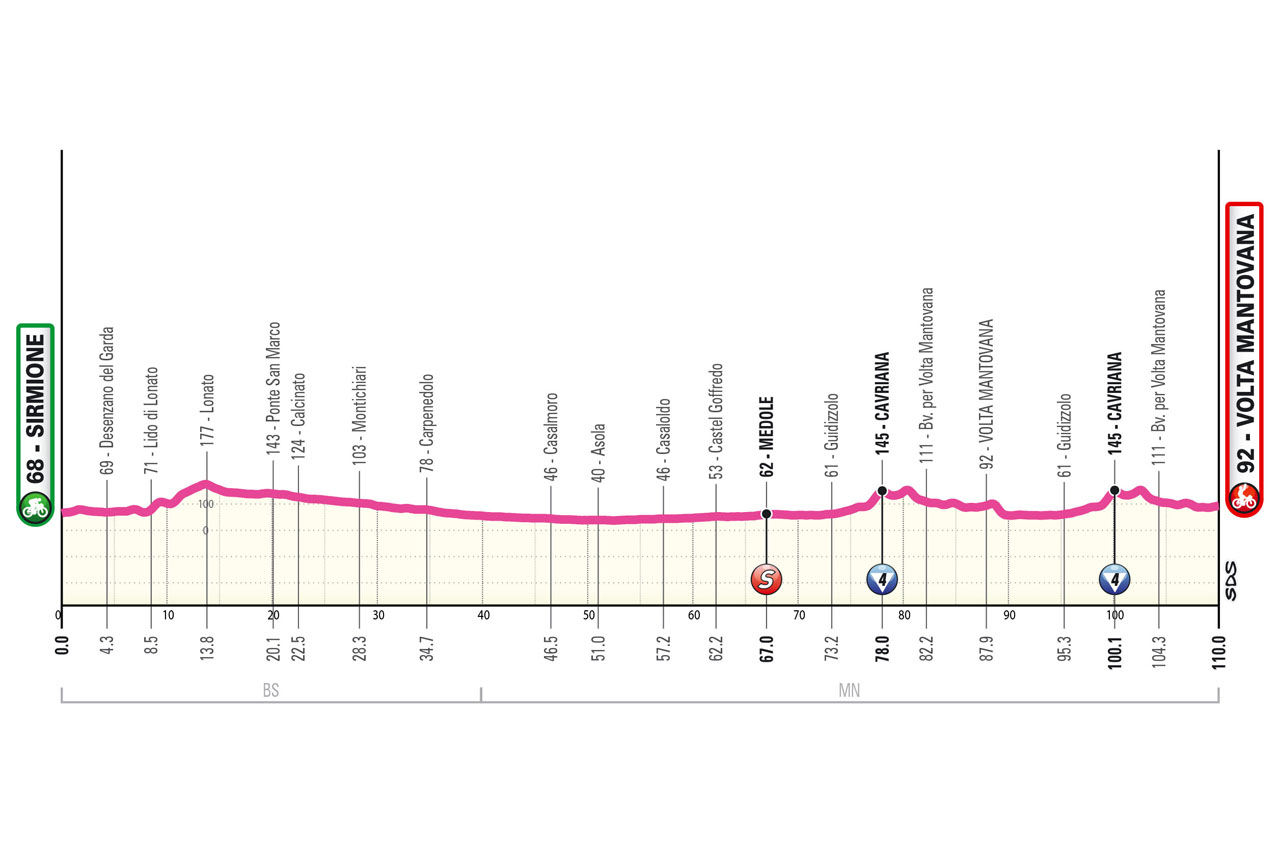
The crunch point of the race starts with 35 km remaining when the field hits the first of the two circuits. It's a gradual run-in to the first climb on the circuit but the set-up by teams will be well before the real climb begins at 33 km to go. The climb itself is a little less than 1 km and maxes out at 7.3%, but after the summit it kicks again before an up-and-down descent. There is then only about 6 km for teams to regroup before the next lap.
After the climbing on the circuit ends the road continues to pitch and roll with only one steep and short descent before the finish. The run to the line is going to be really fast, with both opportunities for attacks in the final circuit on the climb and after it, plus some fun little bonus climbs before the line. It's not going to be a straightforward sprint and could definitely favour anyone who manages to get some distance in that final 15 km.
Stage 3: Sabbioneta to Toano (113 km)
Date: Tuesday, July 9
Stage type: Mountain top
Summary: Flat, flat, flat, CLIMB!
Already on the third stage, we have our first "mountaintop" finish, although the climb itself is quite gradual so it likely won't see too many of the GC favourites distanced before the line, and there is 3 km of relatively flat after the summit of the climb which favours a small bunch sprint of the favourites.
The whole run into the base of the climb is dead flat. The road starts to slant upward 84 km into the 113 km-long stage. It's also not going to be like the Vuelta; there is no wind on the menu in the early stages of this race.
There will be plenty of time for teams to set up for their GC riders, but the climb itself starts with 12 km to go. From there it's almost nine km of climbing, with an average of 5.4% and a maximum of 12.5% grades. With 3 km to go the road levels out, but briefly before kicking again to the line. A really strong climber like Demi Vollering might be able to drop the rest on a climb like this, but with Vollering sitting out the Giro to focus on the Olympics and Tour, it's more likely a small group can stay together on the climb and the fastest among them will sprint to victory *cough* Elisa Longo Borghini *cough*.
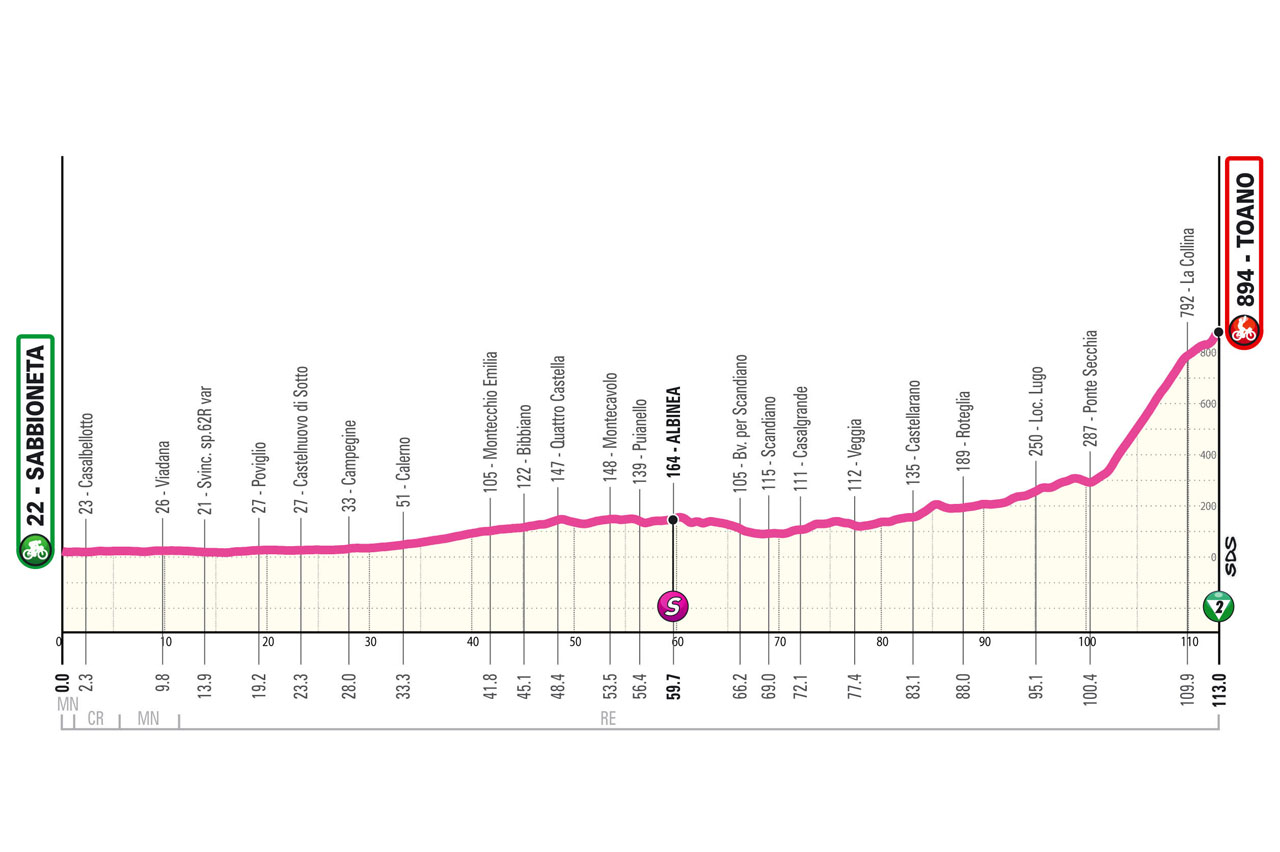
This could be a double race kind of day, with a breakaway of riders who lost time on the first two stages fighting for a stage win and a fight for the GC behind. There's enough flat road before the climb that if a group gets a decent gap and starts the climb with an advantage they may be able to hold off the fastest GC women. The climb is also not necessarily steep enough for the chase to naturally reel in the attackers. But it is more likely the race comes down to the favourites, as the first climbing test for those hoping to win pink.
Stage 4: Imola to Urbino (134 km)
Date: Wednesday, July 10
Stage type: Hilly
Summary: Three challenging climbs to end the stage.
Any sprinters hoping to have their day in the Italian sun will have to keep waiting; yet again the fourth stage will not be for them. It's another pan-flat start, with the interesting stuff not taking off until 51 km to go.
There are three categorized climbs, the final of which ends the stage. The first is a cat 2, the final two are cat 3s, but after a real GC stage on Tuesday, this is a great possible stage for a breakaway.
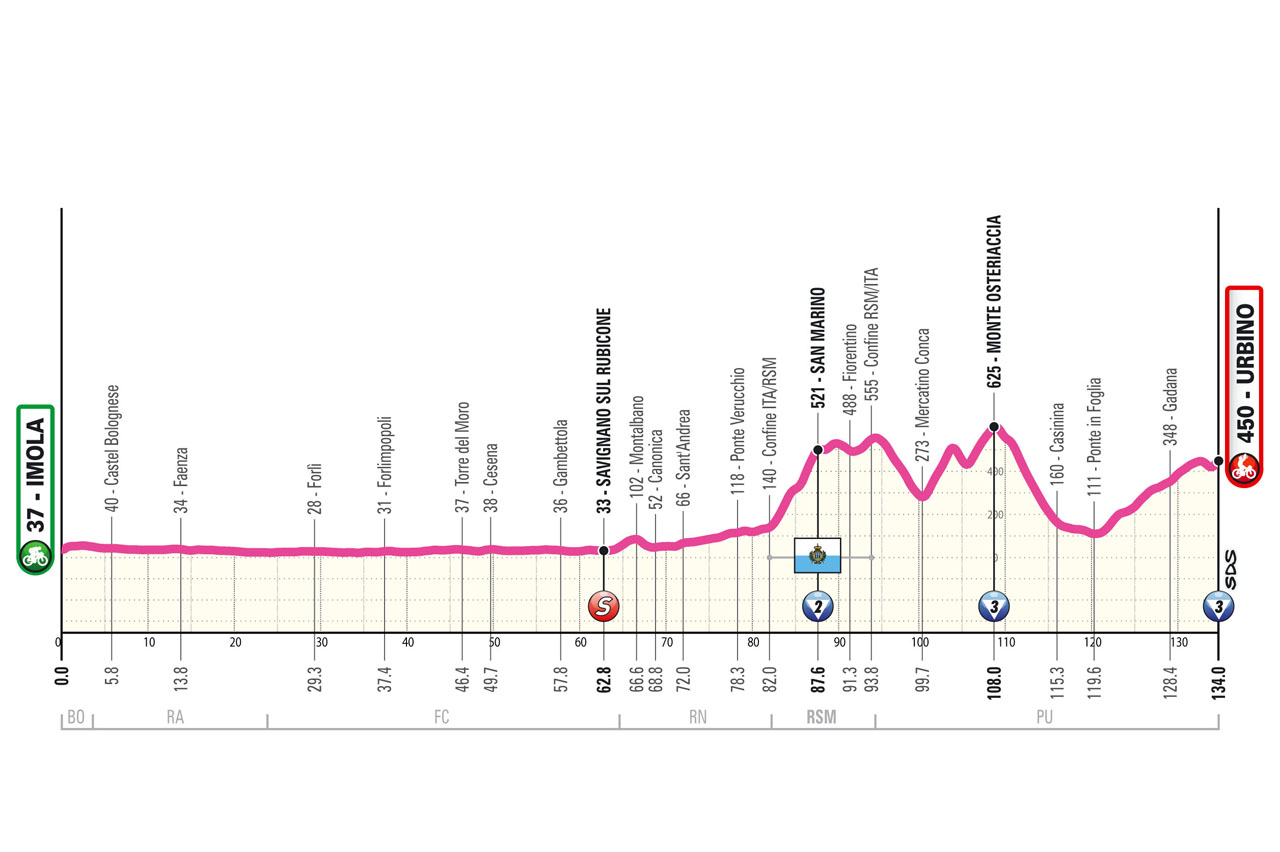
The first Cat 2 is broken up into segments. There is a 1.2 km-long opening section of 7% (max 9%) followed by a 1.2 km-long section that averages 8% but includes a staggering bit of 19%. It finishes off with a chunk of 1 km with an average of 7% and a max of 12%. Each section is broken apart, like a stairstep-type situation. But seriously .. .ouch.
After the summit, the road continues to roll along for 8 km before descending to the next climb. This one is two segments with a descent between them. The first is 2.7 km long and averages 7.8% with a max of 11.4%. After a short descent, there's another climb of 3 km, averaging 6% but maxing out at 13.8%. In total, including the 1.4 km descent, the climb is over 8 km. Not bad.
The final ascent will lead to the finish in Urbino. It starts with 13.4 km to go and rises gradually for the next 11 km. This final one is really gradual, only 2.9% average with some sections of 8%. The road dips slightly with 2 km to go and then pitches again, only a bit, before the line.
Stage 5: Frontone to Foligno (108 km)
Date: Thursday, July 11
Stage type: Sprint stage
Summary: The fast women finally get their chance to shine.
Finally, the sprinters get their chance on the fifth stage from Frontone to Foligno. There is only one Cat 3 climb, 12 km into the stage that lasts only two kilometers and will not affect the final 94 km. From km 27 to km 46 there is a long gradual slog upwards that will make the day a bit more challenging, but the stage itself is short so it's not going to take too much out of the legs.
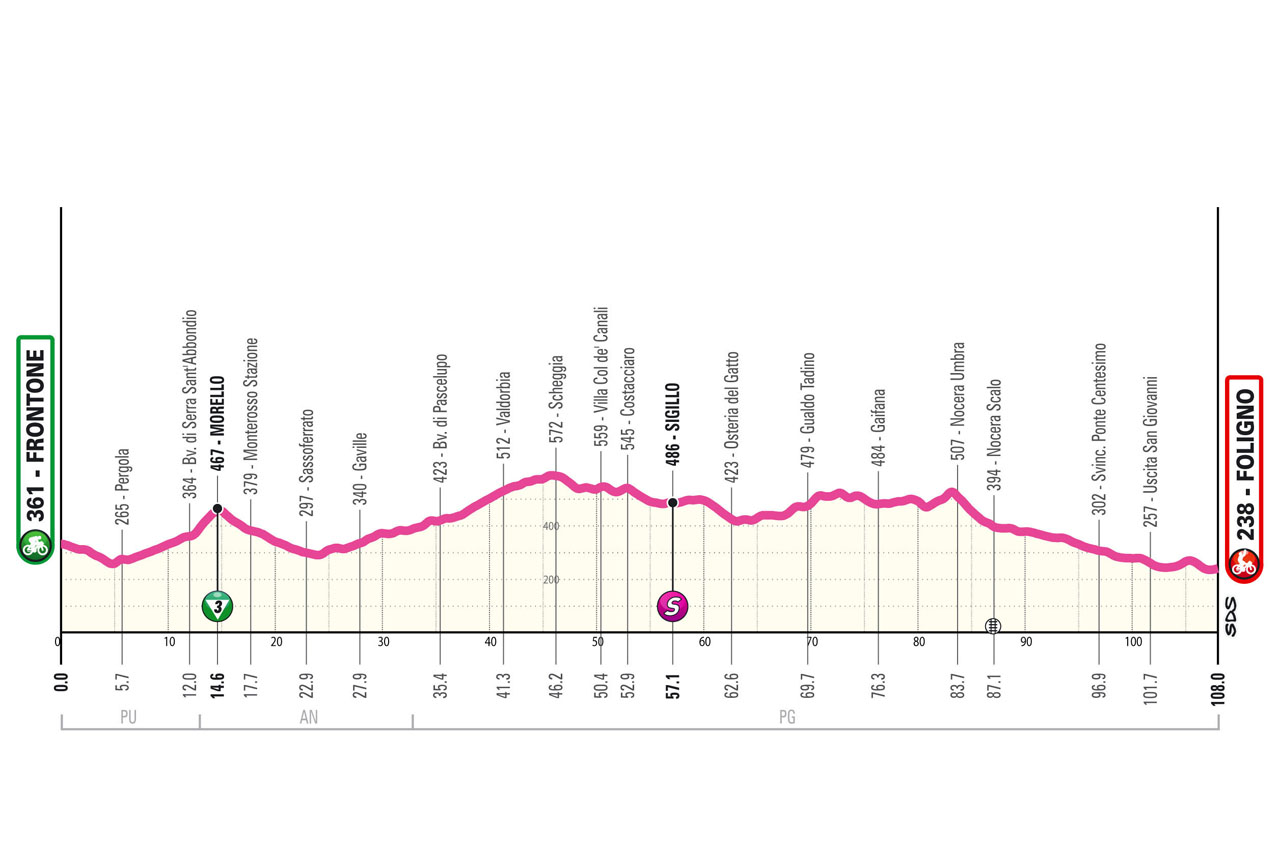
The final 25 km is downhill, so there is plenty of time to shake out the legs and set up for the sprint.
Stage 6: San Benedetto del Tronto to Chieti (155 km)
Date: Friday, July 12
Stage type: Long and draining
Summary: Not a single section of flat road from start to finish, it might as well be a hilly circuit.
Not only is the sixth stage the longest of this year's Giro at 155 km, it is also relentless. The stage has three Cat 3 ascents with a bunch of uncategorized climbing in between; every climb with take that much more out of the legs and there's still one final climb to the finish.

To write down every climb on this stage would take forever, and you wouldn't want to read it all anyway, trust me. It all starts only 13 km into the stage with a short, uncategorized, but brutally steep kicker that averages 10% and maxes out at 15%. From there there's a 10 km gradual climb that kind of stair-steps before descending briefly into two more short ascents.
This takes us into the first categorized climb of the day, a 9.7 km climb averaging 3.9% and maxing out at 10%. This climb descends into another two shorter climbs before the next official climb of 6.6 km, 4.3% average and 8.7% max. One more kicker stands between this "penultimate" climb and the final, 3 km long, 7.5% average, 11.5% maximum gradient ascent to the line.
There is a further 2.8 km to ride before the finish, after the final climb tops out, so it's not really a hilltop finish but it's close.
This day is going to be brutal. With two real summit-finish stages still to come, it is the best chance a breakaway has at succeeding. Teams of the GC favourites might want to conserve as much energy as possible at this stage, which will be a challenge given the length and terrain. Breakaway specialists will be bookmarking this stage, as chasing will be difficult even if teams want to put in that effort.
That being said, it really depends on what's happening in the GC at this point. If it's still close, and there are riders who are feeling really good, even with Blockhaus looming on Saturday, every stage is an opportunity to take time or put rivals under pressure.
Stage 7: Lanciano to Blockhaus (120 km)
Date: Saturday, July 13
Stage type: High mountains
Summary: Ouch.
The queen stage of this year's Giro ends on the iconic Blockhaus climb, so we know Canyon-SRAM will have flagged this one for themselves (get it? Because the climb is named "stone house" in German, and it's a German team).
Racing up Blockhaus would be hard enough but the peloton will actually climb it twice. The first ascent tops out at Passo Lanciano, where the peloton will turn down another side of the climb before they circle back to do the climb again, plus some extra.
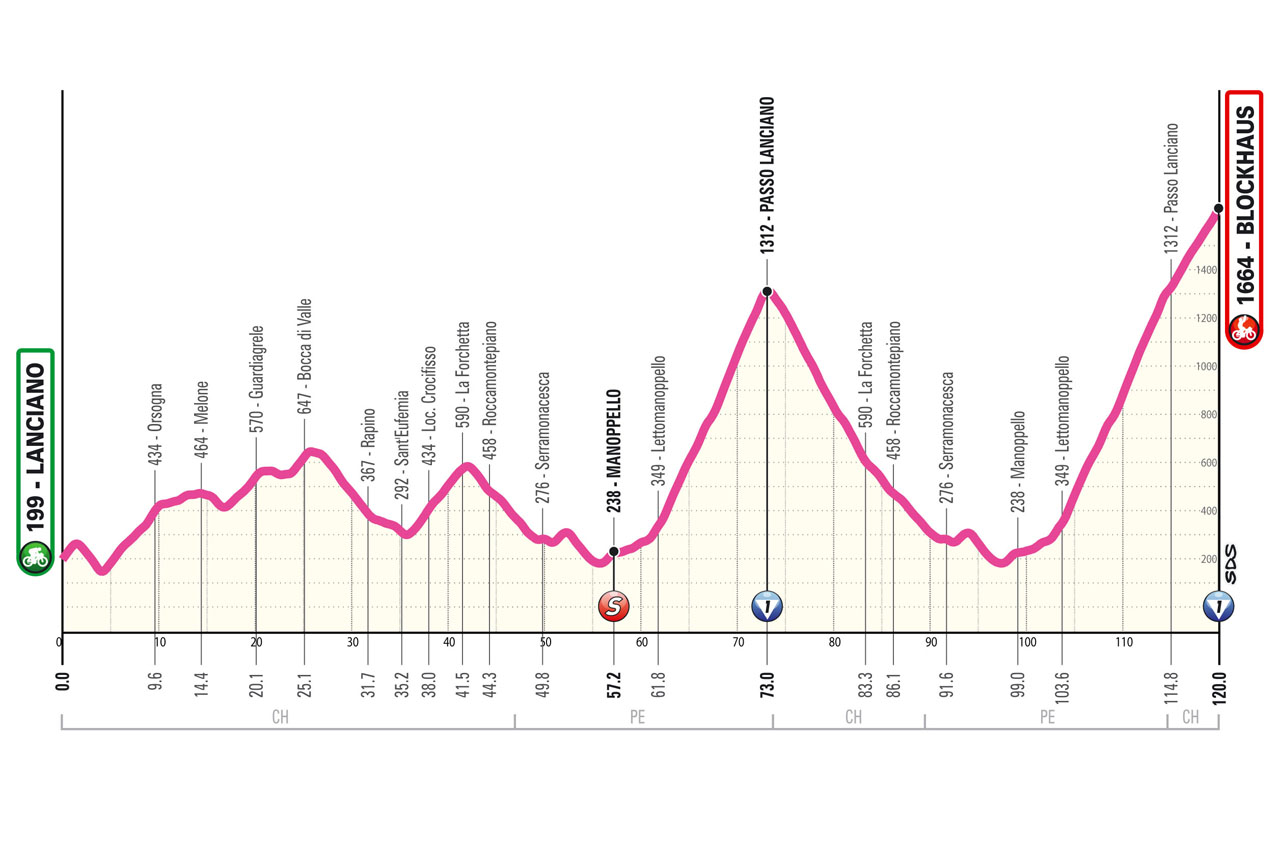
The first 61 km is rolling with a few short, gradual climbs to get the leg sensations vibing. The first of the two Cat 1 climbs starts 62 km into the stage. The first passage of Blockhaus up to Passo Lanciano is 10.7 km long, averaging 8.5% with a maximum of 14.6%. This in and of itself would be enough to determine the GC, but it's only the beginning. Because there is more climbing to come, it's possible riders will be a little more conservative on this ascent. Unless something thinks they can get away and hold it before the second ascent of the full Blockhaus.
Blockhaus, an iconic ascent in the men's Giro, will be the featured battleground for this year's pink jersey. The climb is 17.7 km total and averages 7.8%. It is the highest point of this year's Giro.
It's hard to overstate how challenging this stage will be. With two lengthy climbs back to back, some of our favorite GC riders will be out of the picture before we even get to Blockhaus. But once the race reaches the summit a clear winning will emerge.
Stage 8: Pescara to L'Aquila (117 km)
Date: Sunday, July 14
Stage type: Hilly
Summary: Only one Cat 1 to go!
After the mountains of stage 7 the peloton will almost look forward to a stage containing only one Cat 1 ascent, even if there is 2,406 meters of elevation gain throughout the day.
The final stage starts climbing just 20 km in and doesn't really stop until the finish, but the climbs are long and gradual, as opposed to stage 6's punchy ascents. The first Cat 3 climb is roughly 10 km long, depending on where you consider the start of the climb. The official start is 37 km into the stage, but the road will have been gradually rising for 12 km already by then.
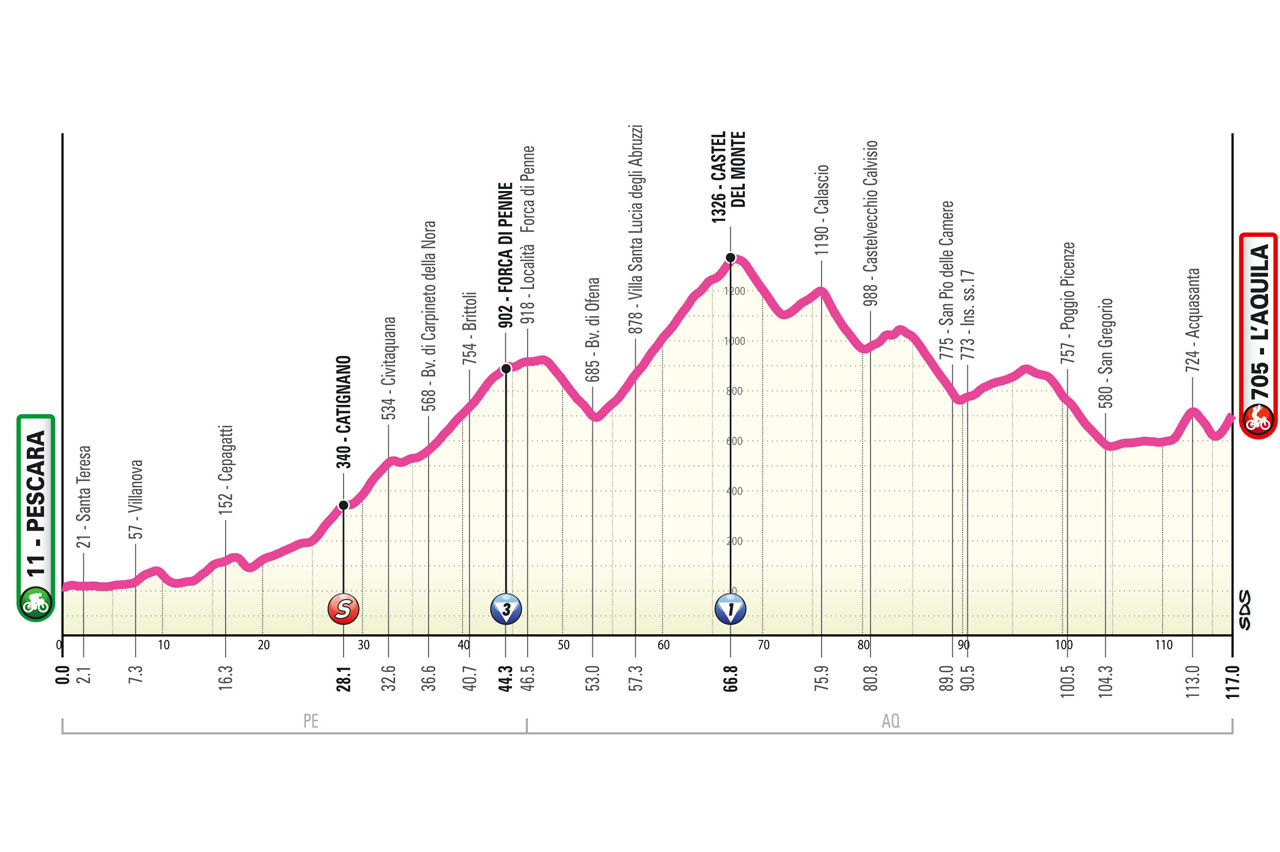
Officially, the Cat 3 is about 7.5 km long, averaging 4.2 % with a max grade of 7.6%. It's nothing compared to Saturday.
After a pedalling descent off the first climb, the peloton will race their final Cat 1 of this year's Giro, a 9.5 km climb averaging 4.8% and maxing out at 9%. From there it's rolling to the finish with two tiny, punchy climbs to end the race.
Looking at the challenging nature of the course from stage 1 to this final stage, it would not be surprising to see a break go on stage 8. The GC will have been wrapped up the stage before, with little room for movement. Think Giro 2020, when Evita Muzic won the final stage.
Bookmark this preview before the race so you know exactly what to expect from the Giro, and if you want even more information about the stages, check out this week's Wheel Talk Podcast where Tour Down Under winner Sarah Gigante dives deep into every detail of the route.
And a reminder that the contenders preview will be separate from the stage preview, so keep an eye out for that!
Did we do a good job with this story?

